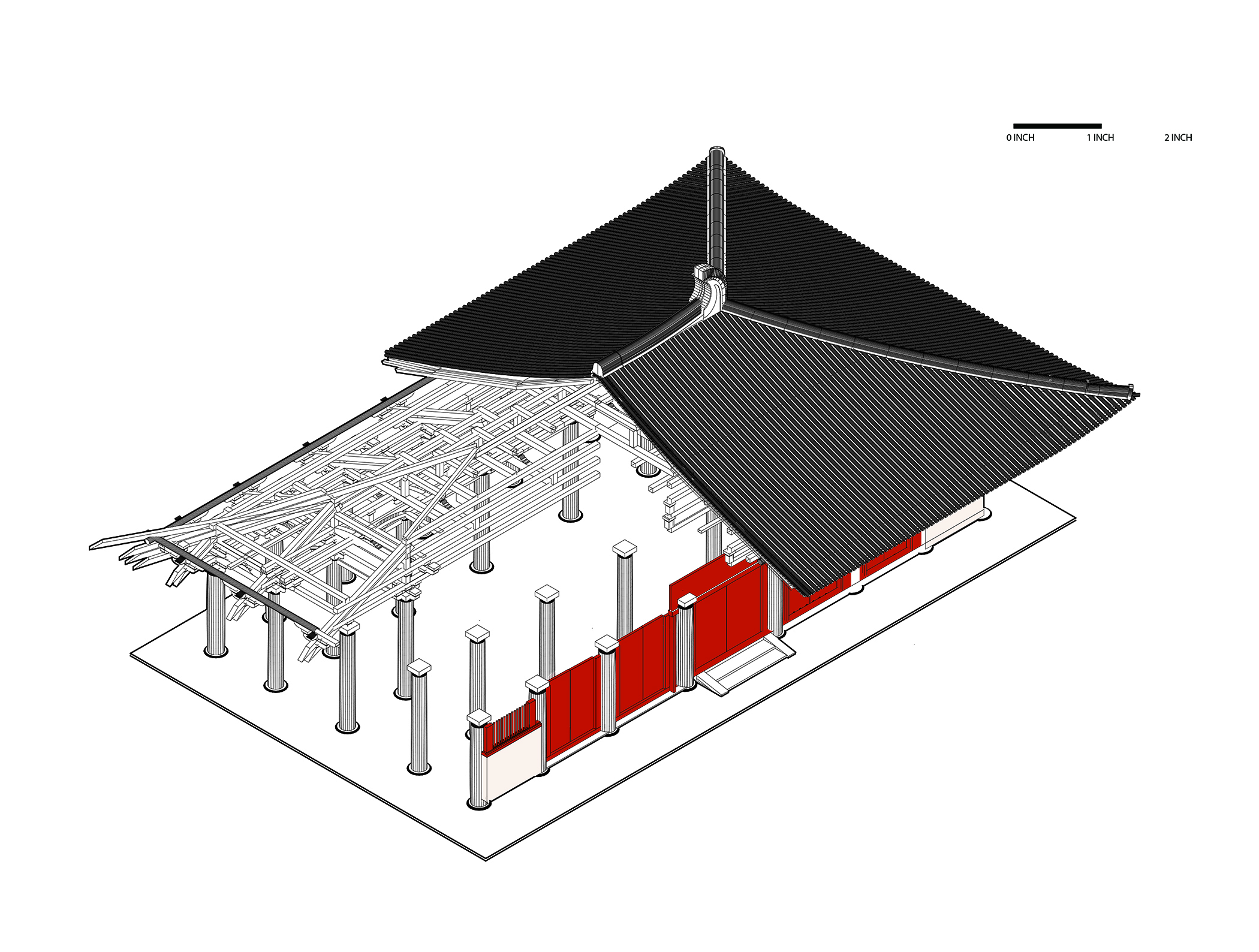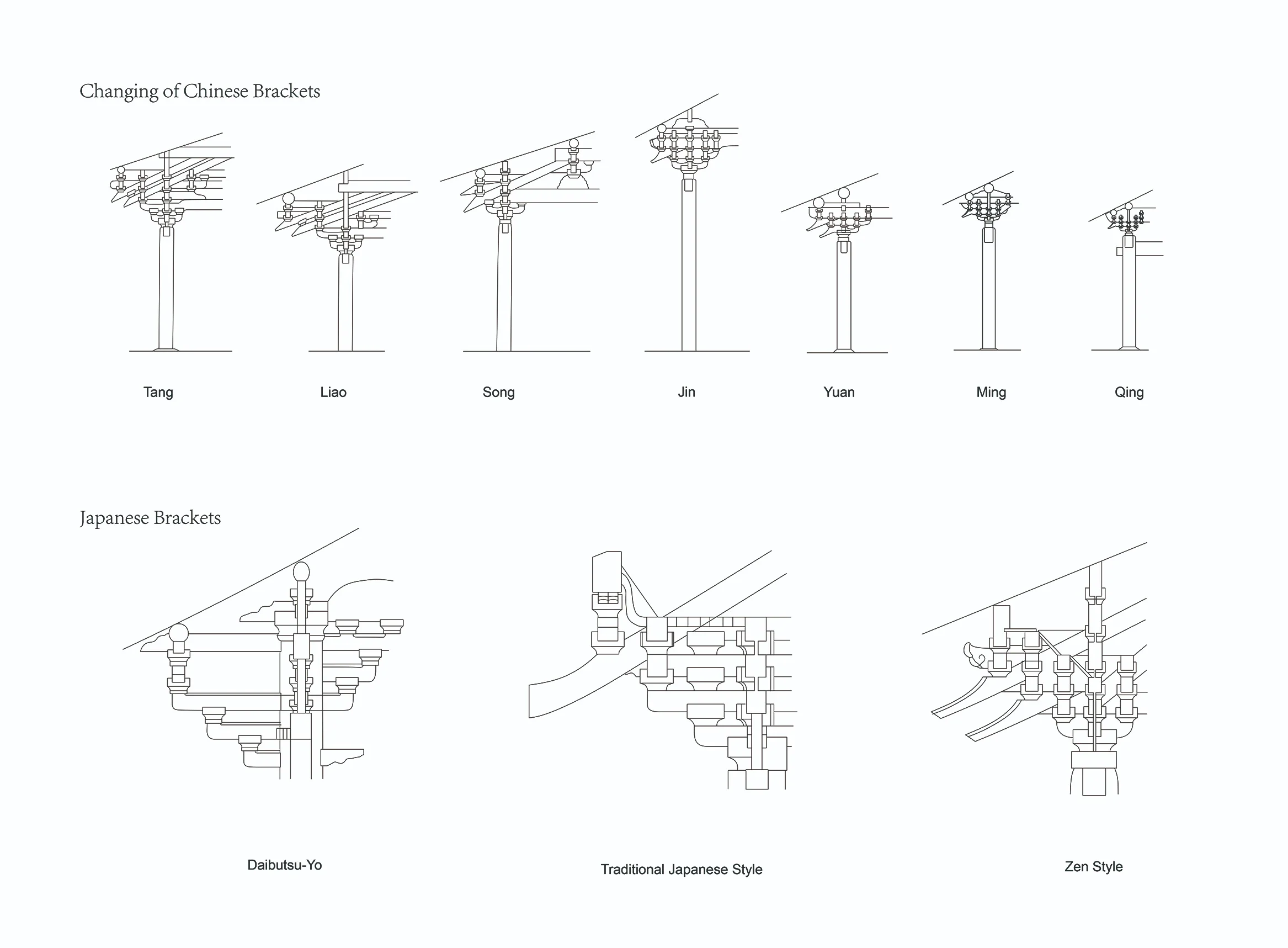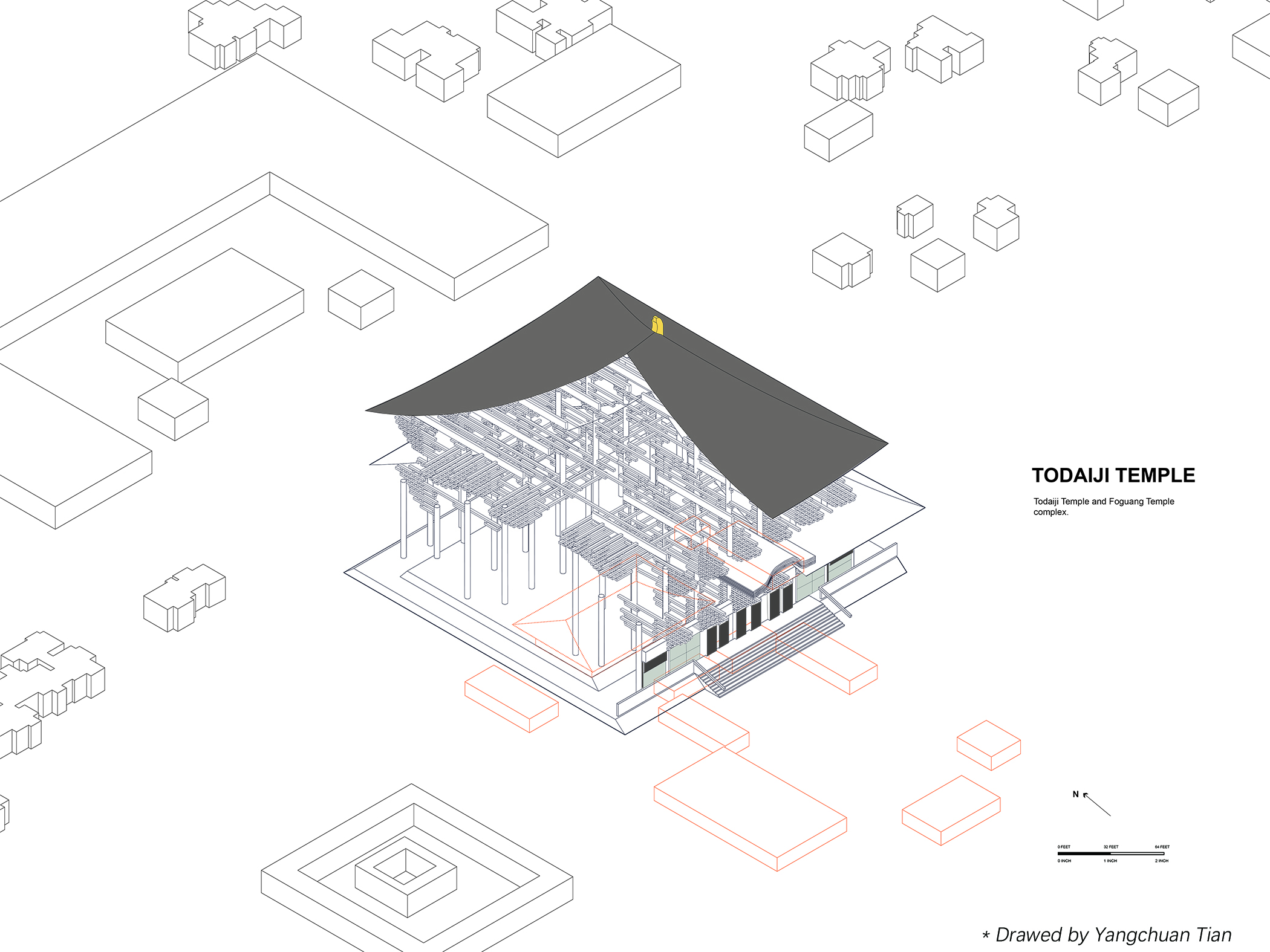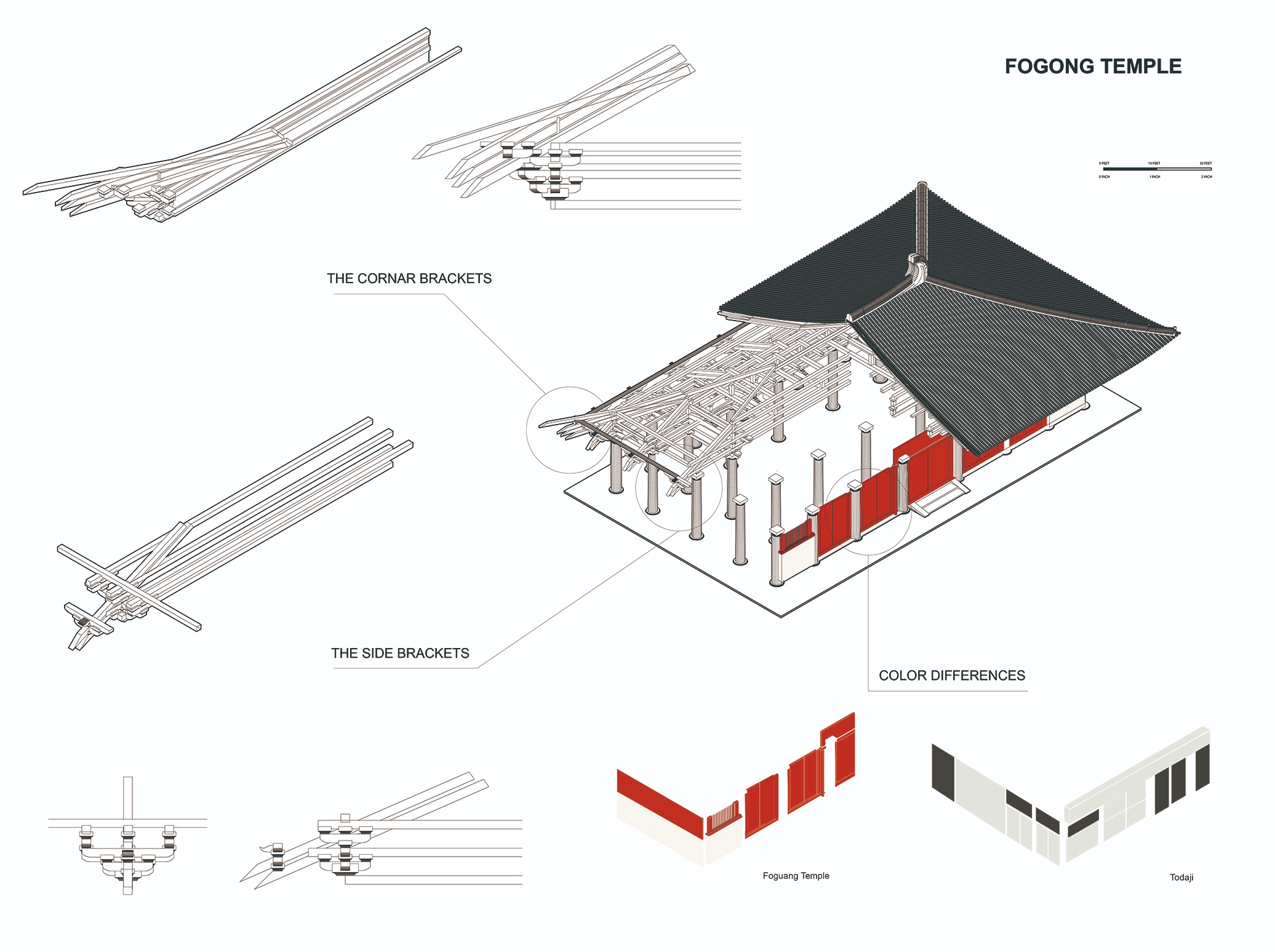
Brackets Development under Culture effects
The Japanese temple culture was influenced by the Chinese Tang Dynasty architecture profoundly and share the similarities with Chinese architecture. However, under the influence of the secular religion, culture and humanities, the Japanese architecture has formed its own unique style.
Here I mainly talk from the similarities and differences between Chinese Fo Guang temple and the Japanese Tōdaiji Temple which are built in the same period (around Tang Dynasty) to analyze the social and cultural impact of the two countries on architecture.

The developments of Brackets in China and Japan
When compared with the Chinese architecture of the same period, it would be found that China's architectural brackets made a simplification-because of the rules of saving materials in Song Dynasty and the enhancement of social class-but the number has increased. Brackets were no longer just a load-bearing tool, it more became a kind of decoration. At the same time the other parts of the buildings were relatively more complex, exquisite, strict, while the Japanese temple buildings ran to the opposite direction.



Reference
• Lip Evelyn.1995.Feng Shui-Environments of Power: A study of Chinese Architecture.
• Fu Xinian.2017.Traditional Chinese Architecture: Twelve essays.
• D.T.Suzuki.1989. Chan and Japanese Culture.
• Zhou Qian, Yan Weiming, Guan Hongzhi, JI Jinbao.2014. Research Advances in Tou-kung’s Mechanical Performances of Chinese Ancient Wood Buildings
• Lin Lin. 2017.Rethinking the Japanese Daibutsu-Yo buildings
• Liu SU. 2014. Comparison Between the Japanese and Chinese Wood Structure
• Yang Kun. 2016. Brackets Structure and wooden Architecture in History
• Liu Tingfeng. 2000. Comparison Between Brackets of Japan and China
Tool
Rhino | Illustrator | Photoshop